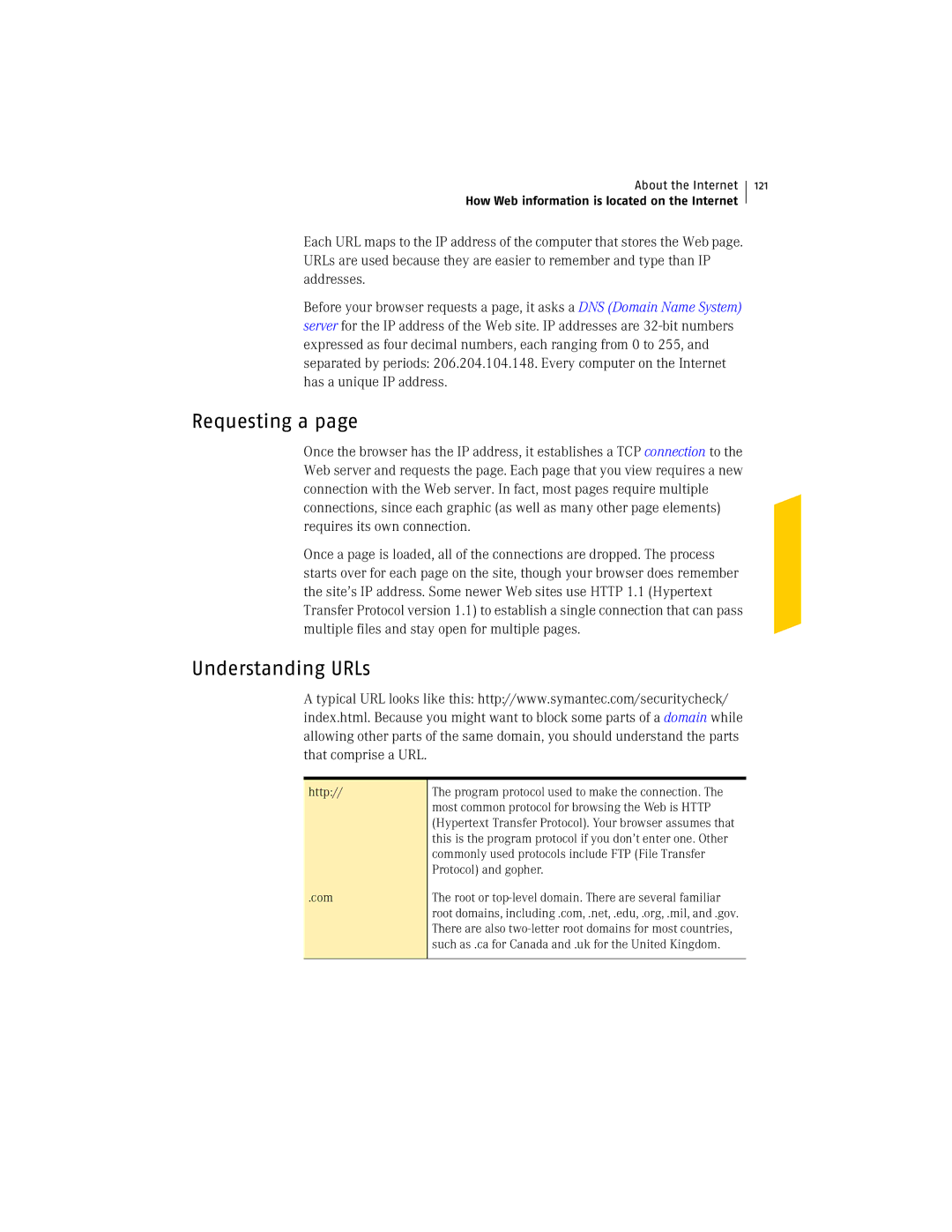
About the Internet
How Web information is located on the Internet
121
Each URL maps to the IP address of the computer that stores the Web page. URLs are used because they are easier to remember and type than IP addresses.
Before your browser requests a page, it asks a DNS (Domain Name System) server for the IP address of the Web site. IP addresses are
Requesting a page
Once the browser has the IP address, it establishes a TCP connection to the Web server and requests the page. Each page that you view requires a new connection with the Web server. In fact, most pages require multiple connections, since each graphic (as well as many other page elements) requires its own connection.
Once a page is loaded, all of the connections are dropped. The process starts over for each page on the site, though your browser does remember the site’s IP address. Some newer Web sites use HTTP 1.1 (Hypertext Transfer Protocol version 1.1) to establish a single connection that can pass multiple files and stay open for multiple pages.
Understanding URLs
A typical URL looks like this: http://www.symantec.com/securitycheck/ index.html. Because you might want to block some parts of a domain while allowing other parts of the same domain, you should understand the parts that comprise a URL.
http://
.com
The program protocol used to make the connection. The most common protocol for browsing the Web is HTTP (Hypertext Transfer Protocol). Your browser assumes that this is the program protocol if you don’t enter one. Other commonly used protocols include FTP (File Transfer Protocol) and gopher.
The root or
